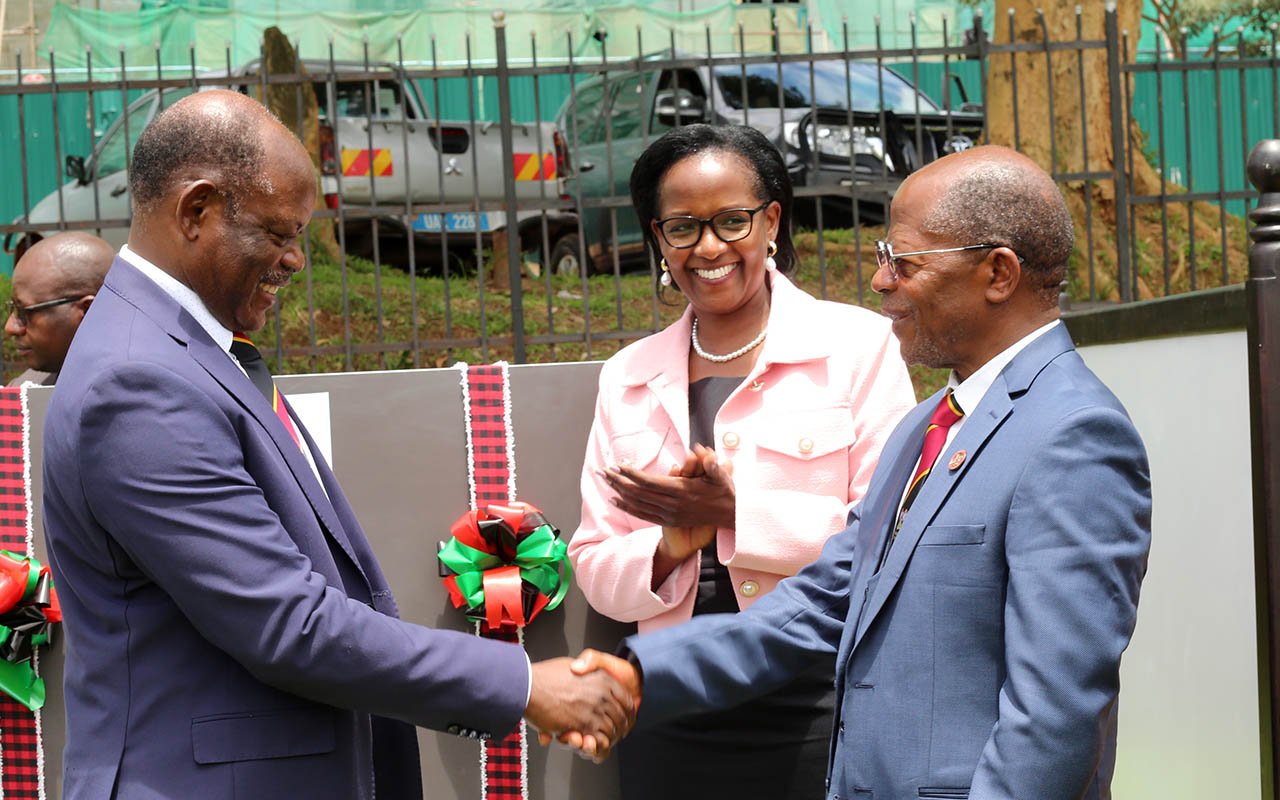Heritage: The untapped revenue source

Heritage site. Tourists climb Mountain Rwezori in July last year. Inset is Moutain Rwenzori peak, Margherita. Mountain Rwenzori National Park is one the three Unesco recognised World Heritage sites in Uganda. PHOTOS BY IVAN SSEBUUMA
What you need to know:
Culture: As the world celebrates heritage today, Henry Lubega looks at how Uganda can use its rich heritage to earn, especially, from tourism.
Today, the international community marks the International Day for Monuments and Sites or World Heritage Day. It is a day dedicated to the preservation and promotion of the world’s diverse heritage.
The World Heritage Day was established by the United Nations Education Scientific and Cultural Organisation (Unesco) in 1983, following efforts by the International Council of Monuments and Sites (ICOMOS). The aim is to promote awareness about diversity of cultural heritage of humanity, and the need for their protection and conservation.
Uganda is currently home to three Unesco recognised World Heritage sites. These include two national parks -- Bwindi Impenetrable National Park, and Mountain Rwenzori National Park, and Kasubi Tombs, a cultural site.
The day is marked to raise public awareness about the diversity and vulnerability of the world’s cultural heritage and the need to protect and conserve it. This year’s theme is “shared cultures, shared heritage, shared responsibilities.”
Heritage comes in two forms -- the tangible and the intangible. Tangible heritage includes buildings, artefacts, types of food, among others.
The intangible heritage includes tribal, spiritual and traditional customs, medicines, entertainment, among others.
Uganda’s heritage
In Uganda, the survival of the tangible heritage is at risk. The Ancient and Historical Act of 1967, under which such heritage was protected, is outdated and has not been amended to fit with the changing times. Under this Act, Fort Lugard was the first building in Uganda to be gazetted as a historical monument. It was a national heritage, but the subsequent governments saw no value in it.
It was later demolished to pave way for a mosque. Its replacement is a sight for sore eyes.
Yao Bulenzi, a retired Unesco expert on cultural heritage, who is also responsible for the drafting of the Ancient and Historical Act of 1967, says government needs to pay attention to historical buildings, not just the museum.
“Government is not paying attention to the historical buildings yet they are equally an important part of our heritage. It is time government considered gazetting historical buildings,” he says.
Last year, a Makerere -based civil society organisation, Cross Cultural Foundation of Uganda (CCFU), published a book, Beyond Reeds and Bricks, in which it documented some of the historical buildings and sites in Kampala, Entebbe and Jinja districts. The book details the historical, political, religious, cultural and in some cases the tourism importance of these sites and buildings.
In Uganda, unplanned development is a big challenge to both tangible and intangible heritage, according to CCFU.
“When you have unregulated development projects, you are going to have a loss of indigenous knowledge, resources such as plants and food, and ancestral places. This mass destruction of resources is erasing people’s history, their identity and their aspect of spirituality,” Emily Drani, the CCFU executive director, says.
The future for Uganda
The future of Uganda’s heritage is dependent on how people value it.
“The young generation spends up to 70 per cent of their time in schools, whose curriculum has no heritage component. This means we have to deal with people who are not culturally educated,” explains Drani.
The young people being the future, CCFU has stepped in to fill the void left by the education system by establishing heritage clubs in secondary schools.
“We have up to 148 heritage clubs in schools across the country. Through these clubs, the youth get to learn and appreciate their cultures,” Drani says.
Besides lack of heritage education in schools, religion is another threat to heritage. Religious heritage is protected and conserved by the different religions, but many times tradition heritage is despised.
“There is worry about the many mushrooming religious affiliations competing for converts. In the fight for converts, heritage is looked down upon and most times destroyed,” she says.
Drani appeals to religious leaders to strike a balance.
“Much as there is need for the preservation of religious heritage, so is tradition heritage. Religion and religious fundamentalism is a big threat to the survival of cultural heritage. We have communities where people say they no longer have empaako (Pet names among the Batooro and Banyoro), while others are saying we no longer do ekyevugo (among the Banyankore and Bakiga) because they are deemed satanic,” she explains.
Bulenzi advises the authorities to document historical building for preservation.
“An inventory of these buildings could be compiled and sent to Unseco to evaluate them and have them included on the list of heritage sites and building in the world. This will help in boosting and diversifying tourism in Uganda,” he argues.
If government was to follow through with the former Unesco cultural expert’s advice, this would add to the five sites on the UN body’s tentative list.
The five are Bigo bya Mugyenyi Archeological Earthworks in Mawogola, Sembabule District, Kibiro salt producing village in Hoima District, Ntusi man-made basin in Sembabule District, Nyero and other hunter-gatherer geometric rock art sites in eastern Uganda, and Mgahinga Gorilla National Park in Kisoro District.
Heritage as a source of income
Uganda should borrow a leaf from other countries that have put their heritage to good use.
David Kalanzi, the secretary to the Historical Buildings Conservation Trust, a non-government organisation that advocates for the preservation of historical building, says government should encourage conservation of historical building and monuments to promote urban tourism.
“In Europe, tourism is not only about national parks, but buildings and monuments. Places like the Forbidden City in China, and Varsilles in France receive a lot more tourist than those coming here to see nature,” he says.
Drani explains that tapping into traditional knowledge and skills will not only promote and preserve it, but also earn revenue for the country.
“This is what Europeans have done. Through the manufacturing and export of thinks such as chocolate, wines and others, they are exporting their cultural way of life, and earn revenue from it.”




